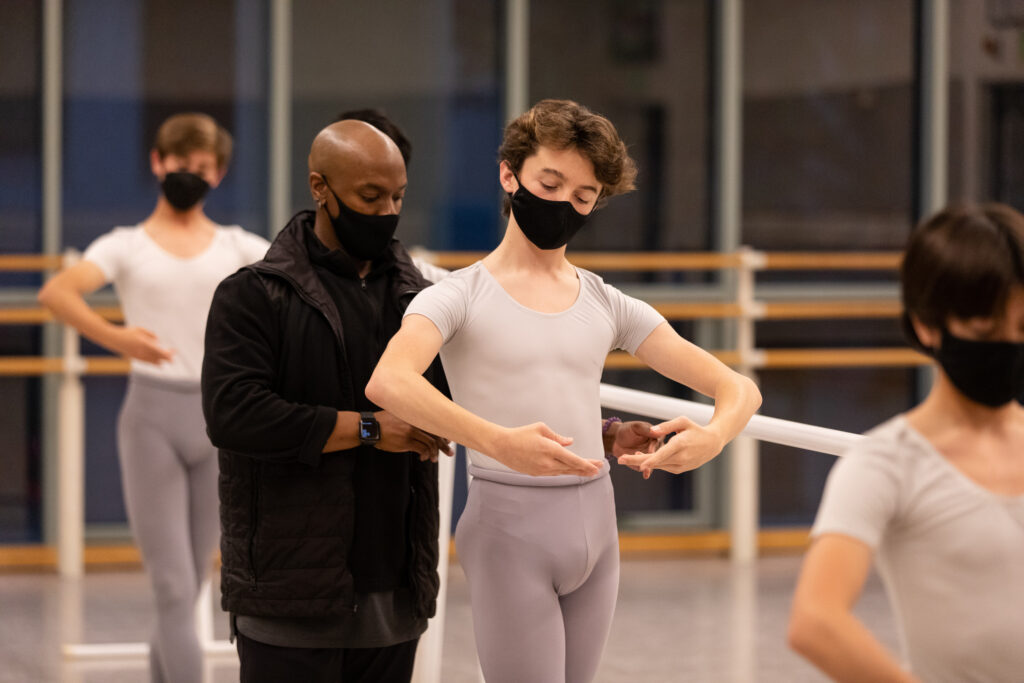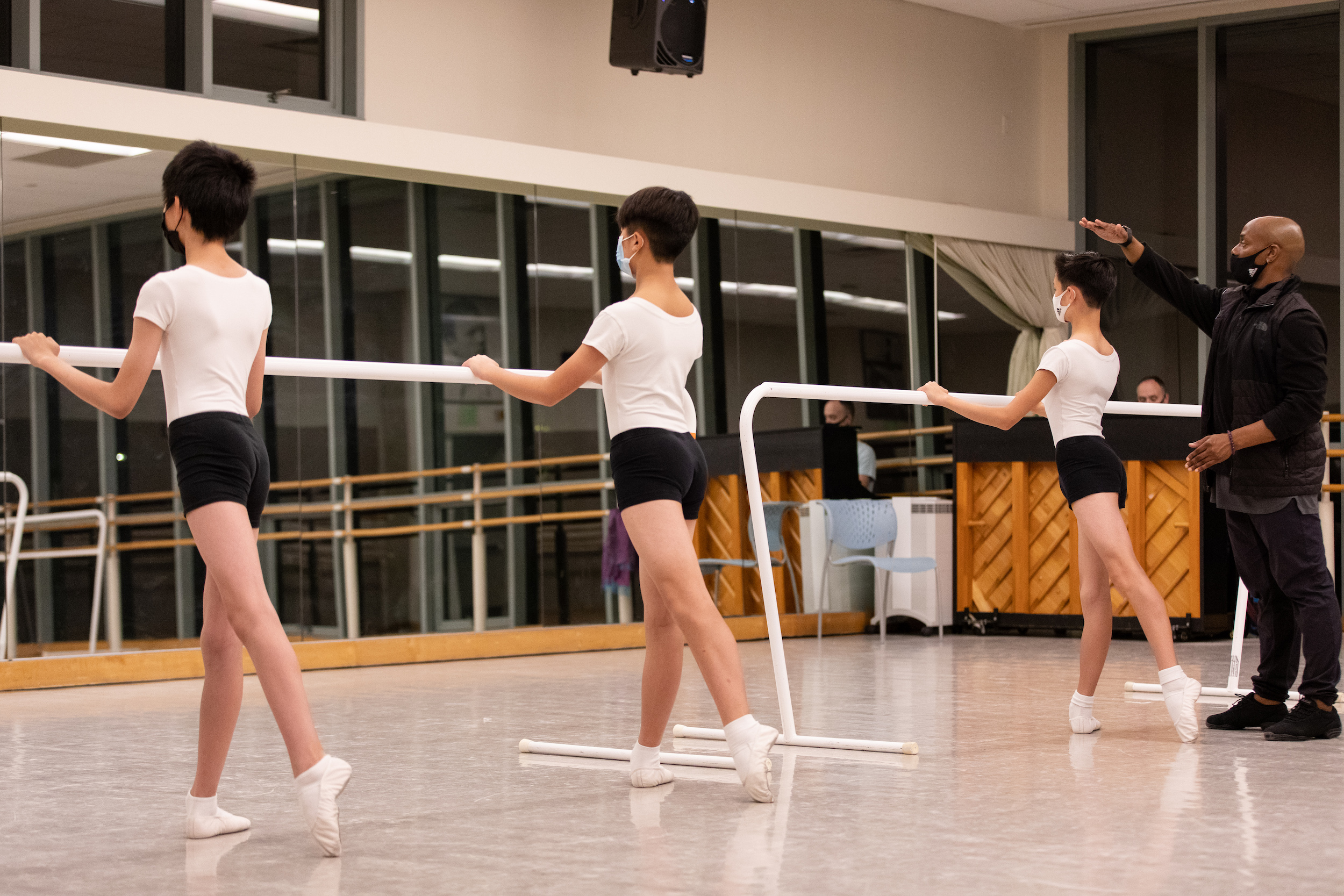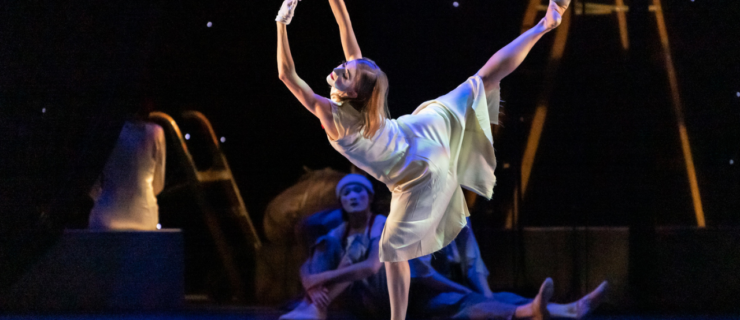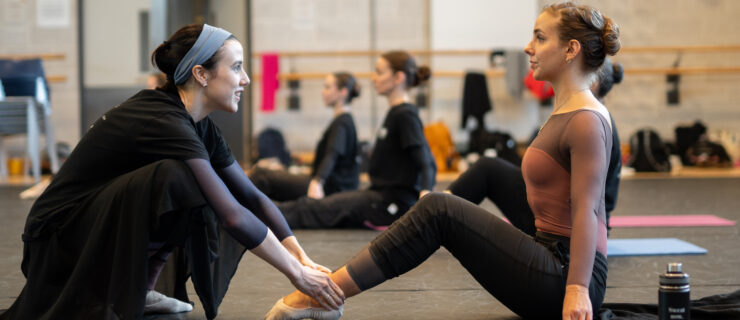A Dancer’s Guide to Guest Teaching
If you’re a professional dancer or early in your teaching career, you may be wondering how to get into guest teaching—especially during breaks throughout the year and in the summer when companies are off and schools are in summer intensive mode. But where do you start? There’s no handbook, so dancers usually have to figure out the process by trial and error or word of mouth.
Jason Ambrose, the current associate director at Elite Classical Coaching and former principal of the children’s division at San Francisco Ballet School, guest teaches a few times a month at schools throughout the country. His travels have taken him to New York City’s Ellison Ballet, Oklahoma City Ballet School, Boston Ballet School and company, and more. Here, he shares his advice for how to get started.

Finding Opportunities

When seeking guest-teaching opportunities, start with schools that you have a personal connection with. Create a list of studios that you trained at or with which you have another affiliation—organizations often like to highlight alumni that have passed through their doors. Ask your colleagues if they know of any schools looking for guest teachers or that host master classes.
Reaching out to organizations that you don’t have connections with takes a bit more persistence. Ambrose says that at the start of his guest-teaching career, he researched places online, “massively sending out emails.” Look for studios that frequently host guest teachers, he says, whether it’s a ballet academy focused on pre-professional training or a commercial dance school that values ballet as part of its curriculum. Studios that participate in ballet competitions are often interested in bringing in guest instructors, he adds.
Crafting the Perfect Pitch
When pitching yourself to schools, your resumé is key. If you’re already a teacher, include your training, where you’ve danced professionally, any teaching certifications you have, where you’ve taught, and any accolades you’ve received. The same is true for professional dancers with less teaching experience, but focus more on your performing career. Most importantly, show what sets you apart in the industry—what experience and expertise would you bring to the students? For instance, Ambrose highlighted his background studying at Russia’s St. Petersburg Conservatory, where he had a unique opportunity to study pedagogy. Those credentials show he can teach students of all ages and levels, showcasing his versatility.
You don’t need to include a video of yourself teaching, but if you choreograph or are looking to set choreography on students, Ambrose suggests including footage of your past work. And if you’re still dancing professionally, you may want to include a link to your dance reel. “There is a market for schools wanting dancers in full physical form to teach,” says Ambrose, not only to demonstrate combinations full-out and be of inspiration for students, but to also potentially perform with these studios.
How Much to Charge
If you’re new to guest teaching, you may be confused about rates. And understandably so—teachers charge a range of fees. For a master class, Ambrose says it’s common to set a flat rate, with the low end being $150 to $250 per class and the high end being $500 to $800 per class. (However, he’s heard of some high-profile teachers charging up to $1,000 per master class.) You can also charge an hourly rate, which is more common if you are teaching a number of classes, says Ambrose. Hourly rates are lower than flat rates and thus more financially suitable for schools with smaller budgets. When starting out, you’ll likely be on the lower side of the scale, but with more experience you can raise your rate.
When teaching at a summer intensive, which can range from one week to several weeks in duration, instructors usually charge a weekly rate. Ambrose says $1,500 to $2,500 a week is the typical low-end pay range, while the high end is up to $1,000 a day for teaching up to three to four classes per day. Alternatively, a school can decide to put you on its weekly teacher salary. Just make sure to contact studios about summer intensive teaching well in advance. Ambrose says he usually plans his summer schedule during January, February, and March.
Consider other factors when negotiating your fee, such as transportation and accommodation costs. Ambrose says that if you send your resumé to an out-of-town school and are subsequently invited to teach, you should expect them to cover your travel, housing arrangements, and housing costs. (This isn’t usually the case if you tell a studio that you already have plans to be in their city and are interested in teaching classes, although you could always try to negotiate.)
Ambrose adds that smaller studios can often offer more opportunities for additional income, like booking private lessons on top of master classes or summer intensives. (Many large schools do not allow their students to take private classes beyond their set curriculum.)

The Benefits
Teaching master classes throughout the year and at summer intensives can make up a considerable chunk of your yearly income. But it also allows you to gain exposure in the industry and expand your network, potentially opening the door to other work opportunities down the line. And for dancers still performing professionally, these connections can pave the way for a future teaching career post-retirement. Most importantly, guest teaching gives you the opportunity to share your knowledge with young dancers from diverse backgrounds. “It shows that you can teach in a variety of environments,” says Ambrose.







